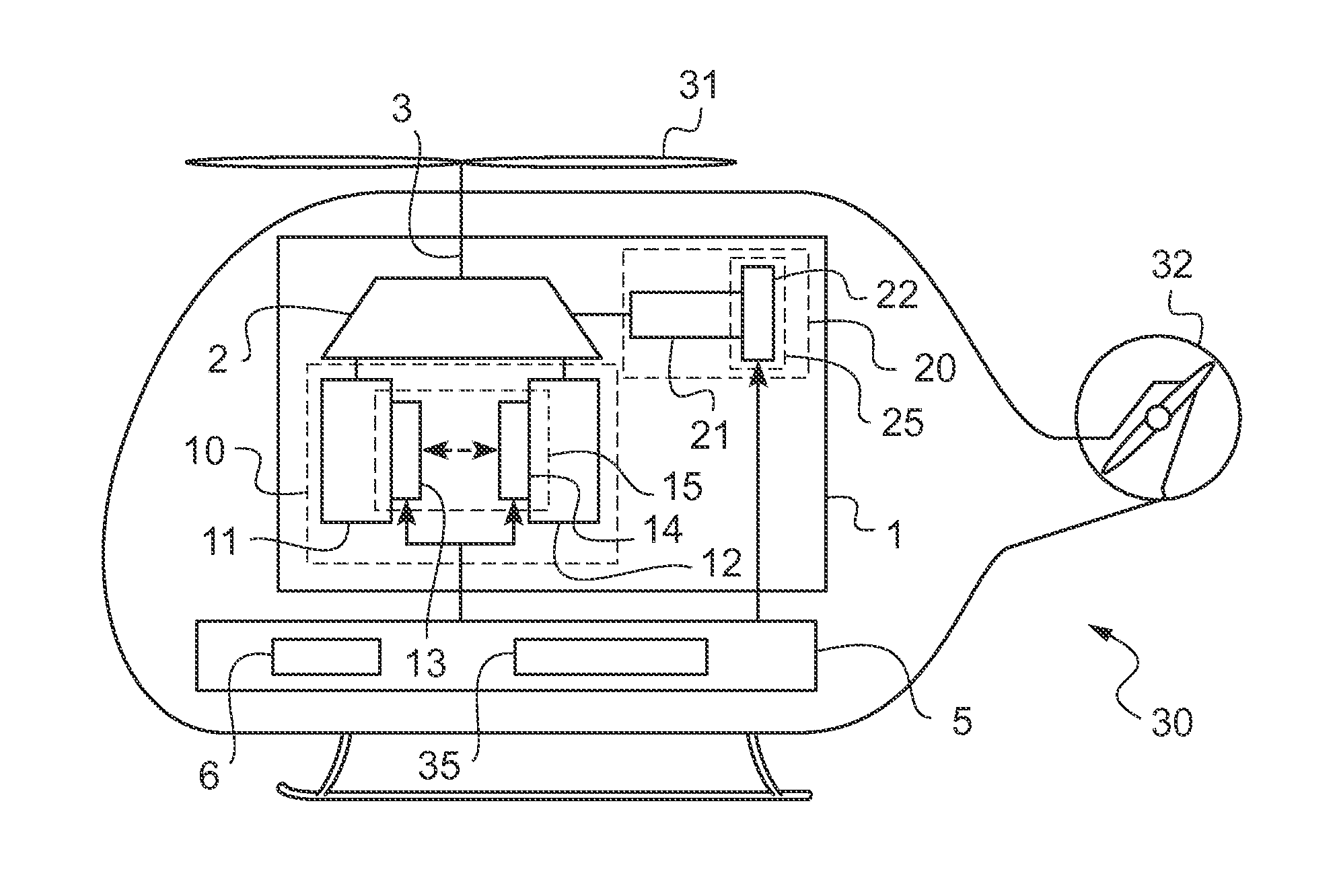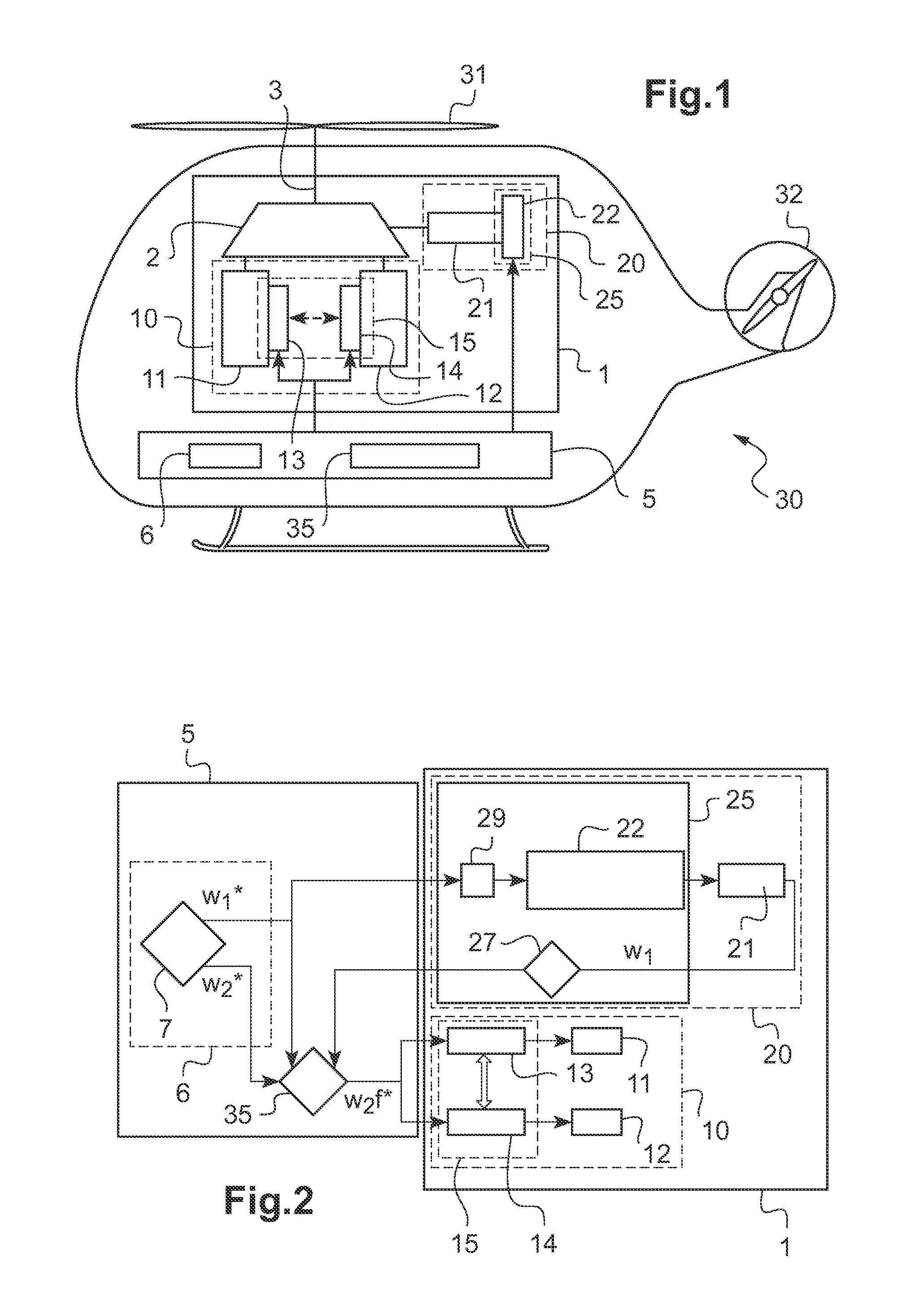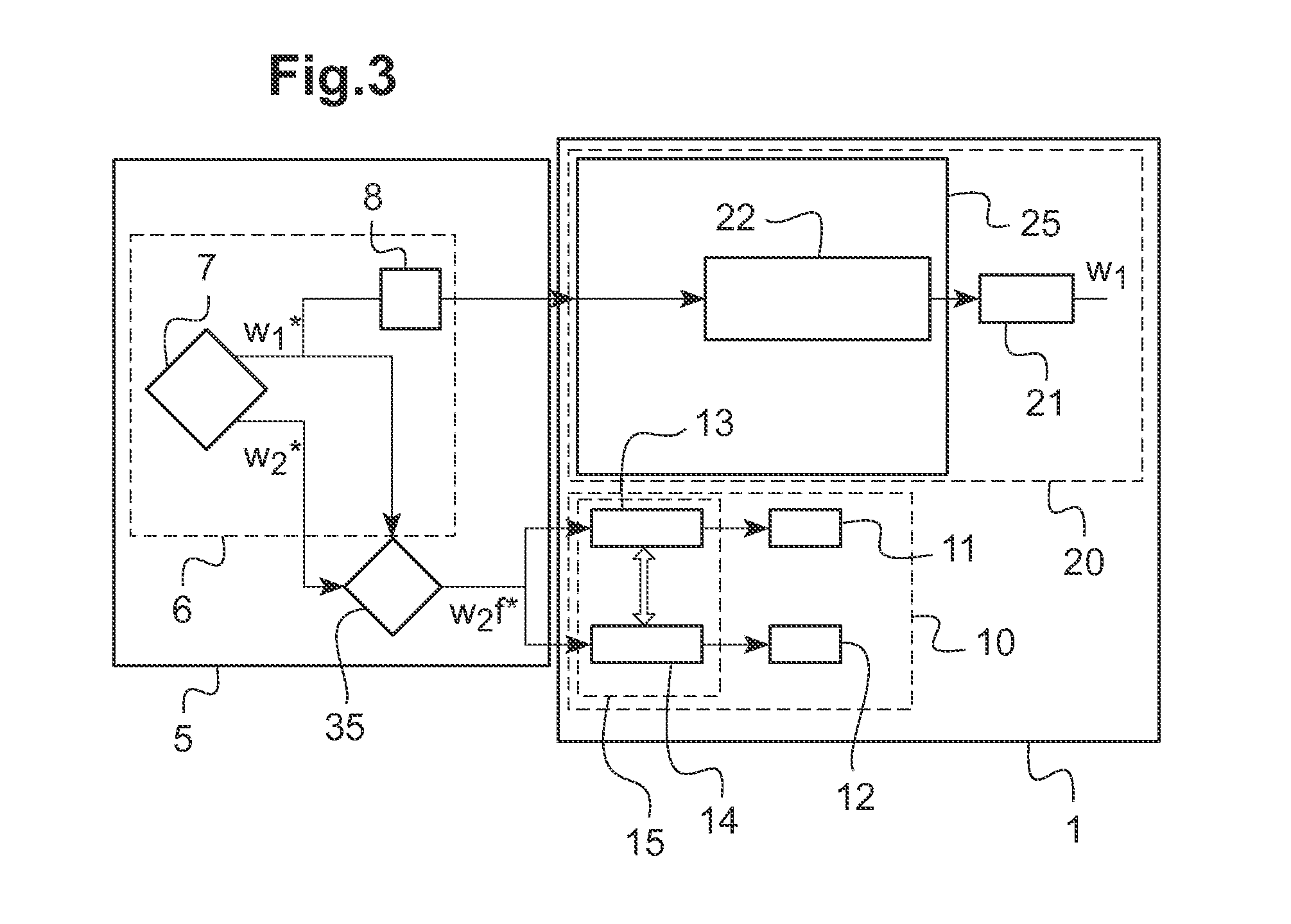Regulated three-engined power plant for a rotary wing aircraft
a technology of rotary wing aircraft and power plant, which is applied in the direction of turbine/propulsion fuel control, air transportation, analog and hybrid computing, etc., can solve the problems of complex connections, system instability, and never reaching the setpoint value, and achieve the optimization of the power delivered by each engine. , the architecture between the computers of each of the engines can be simplified, and the effect of optimizing the power delivered
- Summary
- Abstract
- Description
- Claims
- Application Information
AI Technical Summary
Benefits of technology
Problems solved by technology
Method used
Image
Examples
Embodiment Construction
[0093]FIG. 1 shows a rotary wing aircraft 30 having a main rotor 31, a tail rotor 32, a power plant 1, and an avionics installation 5. The power plant 1 has a first engine group 10, a second engine group 20, and a main gearbox (MGB) 2. The two engine groups 10, 20 drive the MGB 2 mechanically in order to rotate a main outlet shaft 3 of the MGB 2. The main outlet shaft 3 is constrained to rotate with the main rotor 31 in order to provide the aircraft 30 with lift and possibly also propulsion.
[0094]The tail rotor 32 is also driven in rotation by the MGB 2 via a secondary outlet shaft from the MGB 2.
[0095]The first engine group 10 comprises two identical main engines 11 and 12 and a first regulator device 15. The first regulator device 15 comprises two main computers 13 and 14, each main computer 13, 14 being connected to a respective one of the main engines 11, 12, and the main computers 13, 14 are also connected to each other.
[0096]The second engine group 20 has a secondary engine 21...
PUM
 Login to View More
Login to View More Abstract
Description
Claims
Application Information
 Login to View More
Login to View More - R&D
- Intellectual Property
- Life Sciences
- Materials
- Tech Scout
- Unparalleled Data Quality
- Higher Quality Content
- 60% Fewer Hallucinations
Browse by: Latest US Patents, China's latest patents, Technical Efficacy Thesaurus, Application Domain, Technology Topic, Popular Technical Reports.
© 2025 PatSnap. All rights reserved.Legal|Privacy policy|Modern Slavery Act Transparency Statement|Sitemap|About US| Contact US: help@patsnap.com



